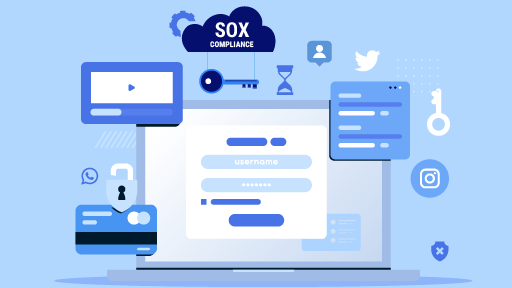Growing incidents of unethical financial practices and increased risk of unauthorized corporate and financial disclosure in the industry was the driving factor behind the establishment of SOX Compliance. Today, achieving SOX compliance is seen as an industry best financial practice for maintaining a good data security standard.
The Act was introduced to bring in a major reform in the security and governance of financial disclosure and further gain public trust and confidence over an organization’s auditing and financial reporting. The standard aims to govern the financial operations, disclosures, and contracted financial services against any unethical practice. Elaborating on the requirements of SOX compliance, we have shared some tips that can help organizations like you achieve compliance. But before heading straight to the compliance process, let us first learn a bit more about SOX Compliance.
The Sarbanes-Oxley Act which is also popularly known as SOX Compliance is a standard that protects clients and stakeholders from fraudulent financial activities and disclosures. The SOX Act outlines compliance requirements for organizations to adhere to and ensure secure business practices.
The objective behind enforcing SOX compliance is to improve the accuracy and reliability of financial activities and the corporate disclosures. Achieving SOX compliance is not just a mandate by law but is also seen as a good business practice adopted by organization. Public traded companies including foreign companies, subsidiaries, accounting firms that audit public companies, and companies that have business in the United States are required to comply with SOX**.** Non-compliance to SOX Act can result in hefty fines and penalties.


